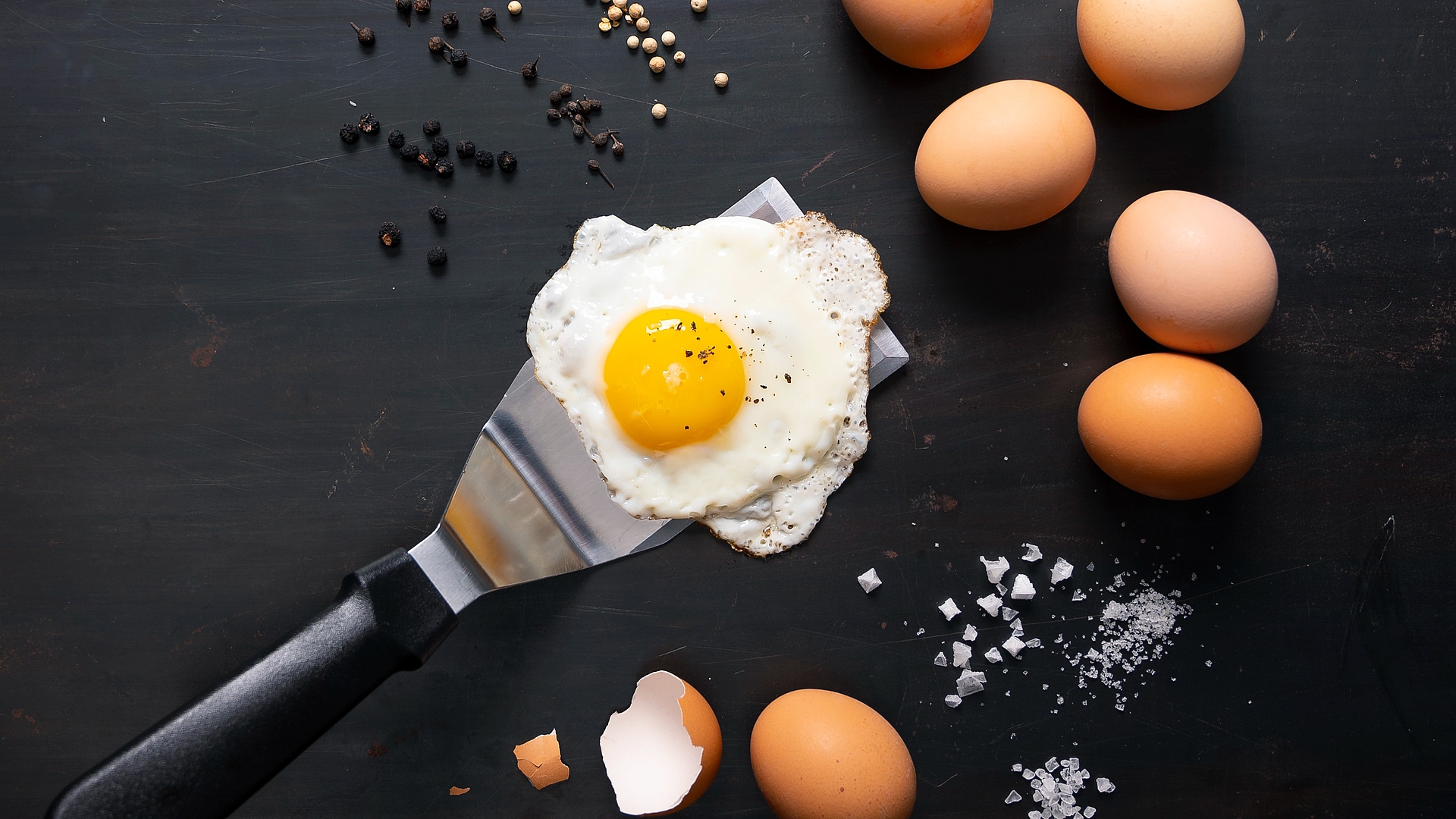
Eggs are so versatile
Easter is all about eggs: we hunt for them, cook them, dye them or use them to make traditional pastries. What better reason to take a closer look at the many ways of preparing this versatile food – and to get to know a few less-known variants.
Fried, scrambled, poached – preparing eggs
There are various ways of preparing eggs for breakfast, one of them being the classic fried egg. This method takes next to no time on a Tepan stainless steel grill or in our BORA X BO flex oven. To fry an egg on the Tepan, simply pour some oil on the plate then crack the egg on top. For the X BO, all eggs need to be at around the same temperature. BORA chef tip: the perforated stainless steel tray works best for this.
Poached eggs, cooked without their shells in a bath of simmering water, are a great alternative to classic fried or boiled eggs, and you only need the following four ingredients: eggs, water, vinegar and salt. First, add a dash of vinegar and a pinch of salt to a pot of water, bring it to simmer, and crack the egg in a bowl.
To make sure the egg sets and to prevent it from running in the water, you first need to stir the water vigorously with a ladle to create a little vortex. Then gradually lower the egg into the simmering water and leave it to cook for around three minutes. If at first you don’t succeed, don’t despair – to make things easier, you could wrap the egg in cling film before you place it in the water.
Breakfast eggs with a difference
You’ve probably already heard of ‘shakshuka’. This hard-to-pronounce North African/Israeli dish is made by cracking some eggs on top of a tomato, pepper, chilli pepper and onion sauce, and baking everything in the oven.
A higher-calorie classic American dish is ‘eggs benedict’. The basis for this recipe is an onsen egg that is slow-cooked Japanese-style for around an hour in water heated to around 65 °C. The X BO takes care of this for you thanks to its special automatic programme. Once the egg is cooked, simply place it on a slice of bread topped with ham and drizzle with hollandaise sauce.
The Turkish breakfast recipe ‘çılbır’ is somewhat easier to digest. Poached eggs are served with Turkish/Greek yoghurt and seasoned with garlic or paprika. Accompanied by a freshly baked pita bread, this dish sets you up perfectly for the day ahead. Eggs are a great source of protein, so dishes such as schakschuka, çılbır, etc. also make a perfect midday or evening snack.
Getting the timing just right
When cooking eggs, the right timing is essential. If you keep your eggs in the fridge, you should take them out half an hour beforehand to allow them to come to room temperature. The size of the egg and the altitude of the kitchen (and thus the boiling point of the water) also need to be taken into account. The following cooking times are based on medium-sized eggs:
- Soft-boiled egg with runny yolk: 4 minutes
- Medium-boiled egg with creamy yolk: 7 minutes
- Hard-boiled egg with solidified yolk: 10 minutes
And just in case you’ve forgotten how to tell if an egg in your fridge has already been cooked or is still raw, there’s an easy way to find out: spin it on a tabletop and if it spins nicely then it’s cooked, but if it wobbles and quickly slows down when you spin it, then it’s raw.
OMELETTE WITH HAM, BLUE FENUGREEK AND MOUNTAIN CHEESE